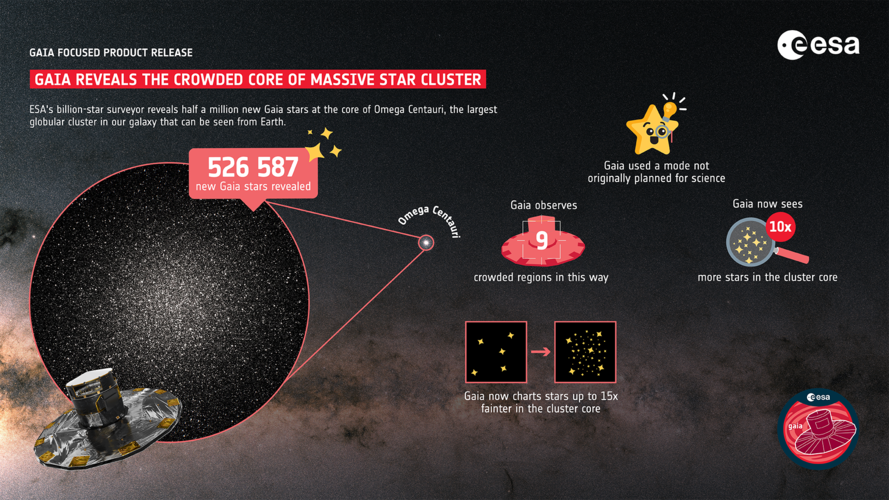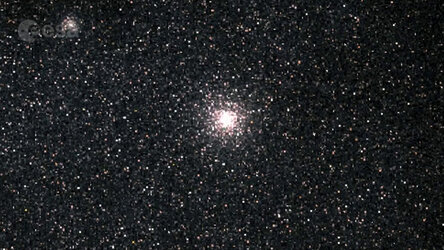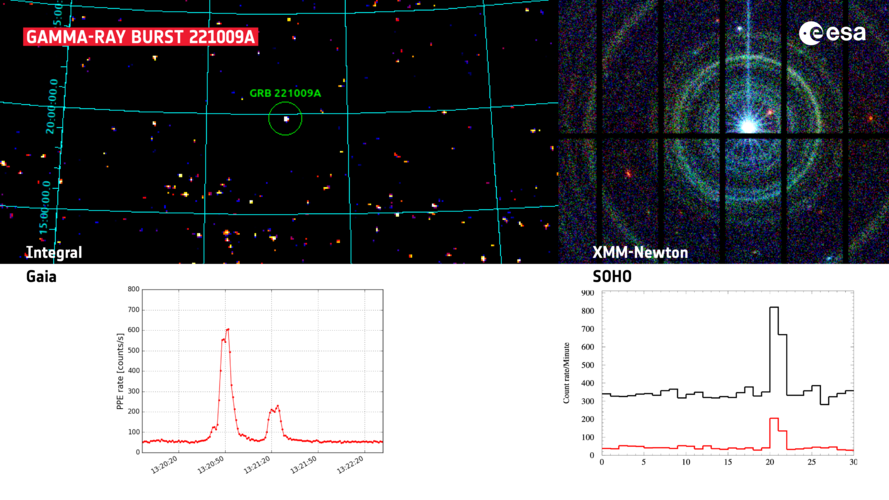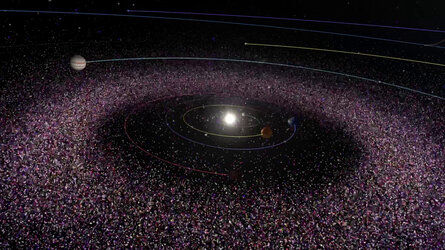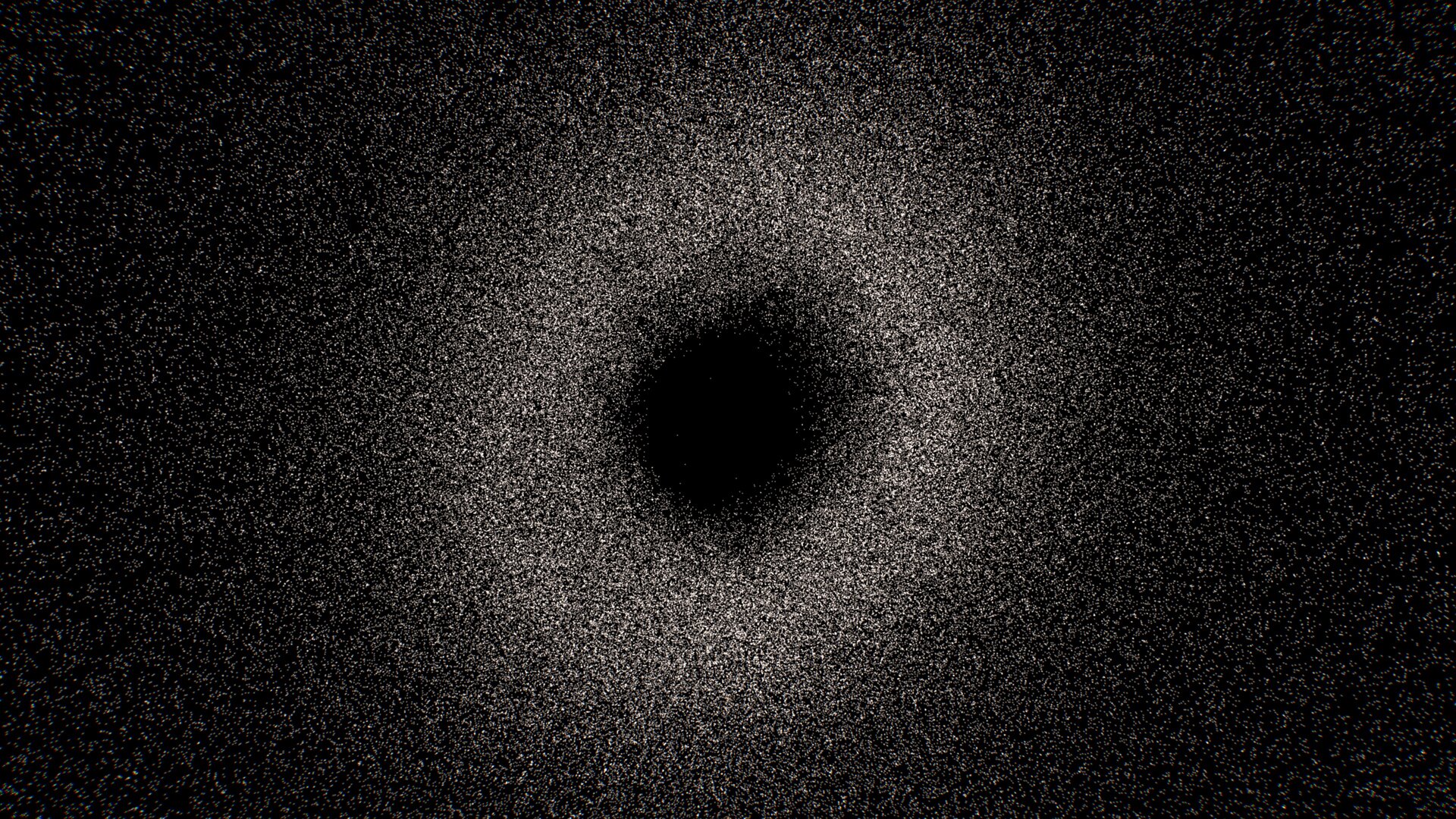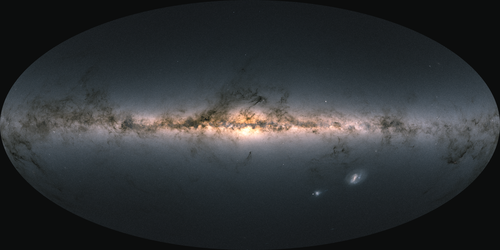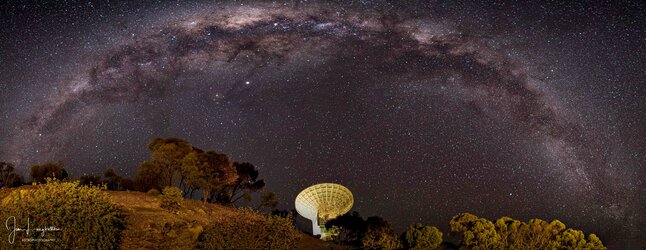
Gaia
ESA's billion star surveyor
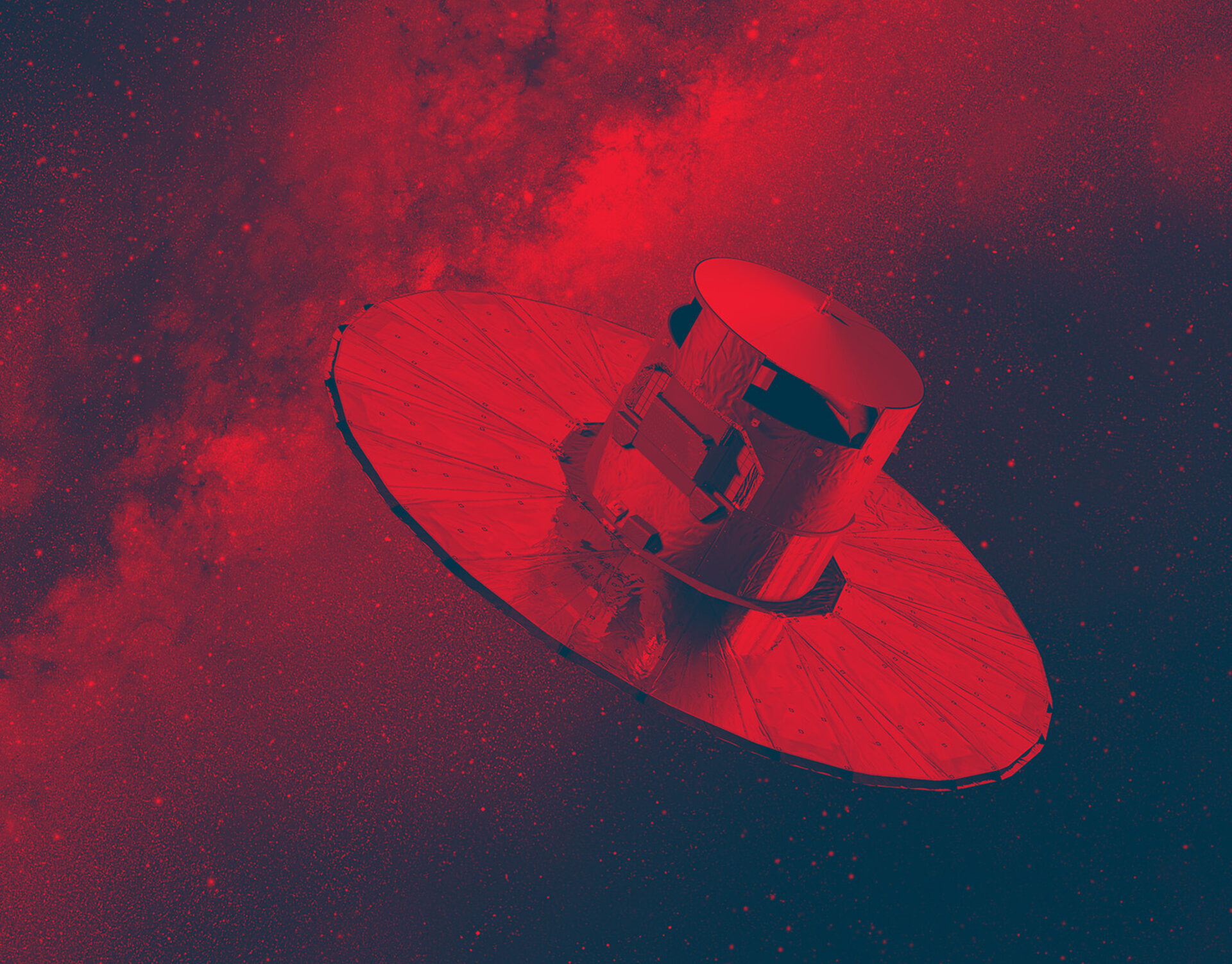
The mission
Gaia is creating an extraordinarily precise three-dimensional map of more than a thousand million stars throughout our Milky Way galaxy and beyond, mapping their motions, luminosity, temperature and composition. This huge stellar census will provide the data needed to tackle an enormous range of important questions related to the origin, structure and evolutionary history of our galaxy.
- 1 billion pixel camera
- 10 m sunshield
- 1800 million objects














